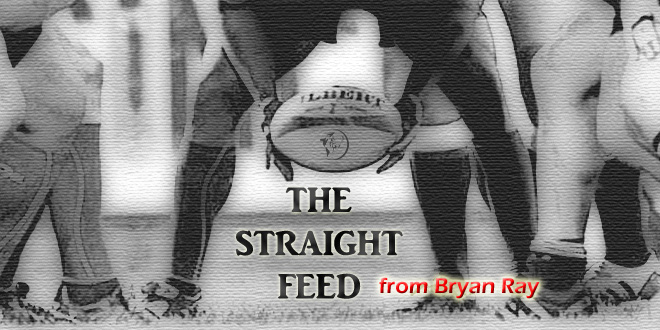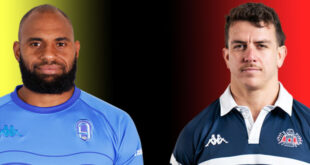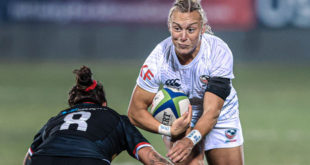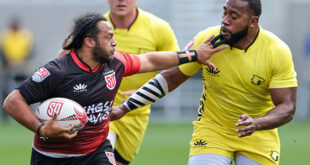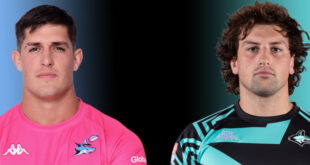With the Pacific Nations Cup now behind us, it’s time to turn our full attention to the World Cup, but not before we have a little debrief on the tournament. After endless changes to the format over recent years we finally got something closer a full-on version again, but as my colleague Ted Hardy pointed out earlier in the week, it still feels like World Rugby sees this as an obligation rather than an opportunity.
The tight scheduling and timing meant that every side was short-handed in some respect, and there were numerous changes virtually every game. As such, the competition as a whole seemed to matter less than individual match-ups. Aside from giving a few players some playing time, what is the point of running out a USA B side against a mixed Tonga team under the guise of test rugby? Even the Fiji-Samoa matches, which were both brilliant spectacles, were tainted slightly with neither team truly at full strength.
Despite that and a host of other issues, it was a fun tournament on the field. The question now is where does the tournament go in the future? With the Americas Six Nations potentially kicking off next year, is there room for a proper five week Pacific Nations Cup in the summer? Will World Rugby put their support behind the Tier 2 nations to ensure full player release and a reasonable schedule? The interest appears to be there, but funding remains a problem and as usual the fate of Tier 2 test sides relies on the good will of those sitting at the top.
ATTENDANCE NUMBERS
It wasn’t a record-breaking tournament but the numbers weren’t too bad. In the neighborhood of 10,000 watched the games in San Jose, Sacramento, and Toronto. For Bonney Field that meant close to a sellout, but only about half capacity at Avaya Stadium and BMO Field. The turnouts in Burnaby weren’t great either – 3,600 for the first match and about 4,700 on finals day – though taking into account that the capacity of Swangard Stadium is only 5,200, it’s hardly disastrous. With a full strength tournament one would hope those numbers would be considerably improved.
COMMENTARY MATTERS
Let’s make this point as succinct as possible. Watch the first Fiji-Samoa match, and then watch the second. Which commentary team do you prefer?
Ok, let’s expand slightly. Dallen Stanford and Dan Power were a breath of fresh air for American audiences especially used to stand-in cricket announcers. In fact, it might not be a stretch to call them the best thing to happen to rugby play-by-play in these parts since… well… ever.
We’re now 20 years into professionalism, with a worldwide audience, and even the neophytes north of the equator don’t need to be patronized with rules explanations and bland generalizations, not to mention numerous inaccuracies and some statements that were flat out wrong. Showing us the games has won our curiosity, now get our attention with some quality commentary.
WHERE’S THE TMO?
We finally got proper TMO’s in for the finals day – thank the rugby gods – but where were they for the other games? All of the teams that took part are heading to the World Cup, and most of the referees will be employed there in some capacity, is that not sufficient reason to give them top-level officiating tools, or is the cost really that high?
OH CANADA
The only word need used to describe Canada’s tournament is ‘disappointing’. Sure, you could attach any number of negatively inclined adjectives, but they all point to the same conclusion. It wasn’t so much that they lost, it was how they performed that was most frustrating. So many basic mistakes from players we expect much more from, so many decision making errors. The team struggled to put together 20 minutes of good rugby, never mind a full 80.
Perhaps most upsetting is the lack of physicality in the defense. It’s all well and good to soak up the tackles minute after minute, but at some point you have to drive someone backwards. The great Canadian teams of the past all had men up front who thundered their opponents to the deck. Norm Hadley, Rod Snow, Danny Baugh. You might beat them with sound rugby, but running straight at them was going to cost some blood. Without Jamie Cudmore and Jebb Sinclair, the defense looked mostly toothless.
Leave it to the youngsters to provide some positives. Djustice Sears-Duru, one penalty aside, looked very much the part of an international player. He has a huge future, and is already making a claim for a starting jersey. Evan Olmstead finally got a chance and displayed what everyone thought he might – aggression and urgency. Jeff Hassler was back up to speed after recovering from a knee injury, and Connor Braid showed flashes of excellence in the midfield.
SET PIECE, SET PIECE, SET PIECE
It doesn’t take Jake Frechette’s analysis to know that Canada had the worst set piece in the tournament. There’s no point making excuses, facts are facts and it simply isn’t good enough. If the team does nothing else between now and September 19, finding a way to secure their own ball at the scrum and lineout is absolutely mission critical.
THANKS PRITCH
For the first time in a long, long time, there was no James Pritchard in the Canada squad named after the tournament. We will reserve writing a eulogy for his test career just yet as he’s only an injury away from getting a recall, but there is a real chance that he has now played his last test. If so, thank you, Pritch, for a brilliant record-setting career. Though you weren’t born here your dedication has been exemplary, and there has been no greater professional in a Canadian jersey.
 Americas Rugby News Rugby news from across the Americas!
Americas Rugby News Rugby news from across the Americas!
